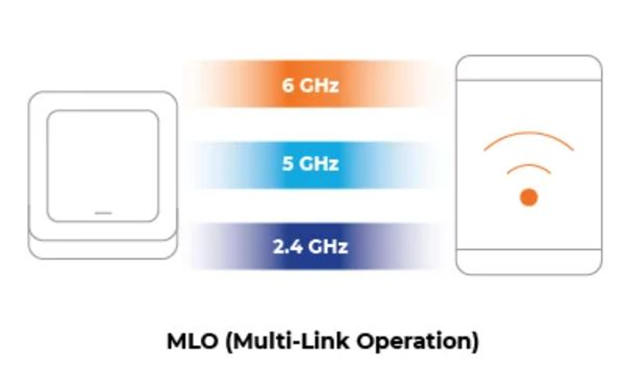What you need to know about Wi-Fi 7?

What you need to know about Wi-Fi 7?

As Wi-Fi 7 continues to make waves in the technology world as the latest wireless technology, RUCKUS Networks has been working hard to bring all aspects of this new technology to our readers, for those that have already begun to enter the market and are expected to expand further in 2024. Get ready for the "wave" of new equipment.
Starting from CES 2023 in Las Vegas in January 2023, a series of products have been announced. ARRIS also announced a Wi-Fi 7 modem at CES, the SURFboard G54. As with most technologies, it’s interesting and new, but sometimes it’s hard to distinguish what’s market hype from what’s new and interesting to Wi-Fi professionals.
Extremely high throughput (46 Gbps, 4K QAM, 320 MHz wide channels, etc.)
Starting from 802.11n (Wi-Fi 4), IEEE began to assign suffix definitions to the released PHY revisions to remind us of our concerns about the revisions.
For 802.11be, the suffix is Extreme High Throughput, or EHT (which also supports higher bandwidth). The theoretical peak speed of the new Wi-Fi 7 is slightly higher than 46 Gbps, but in order to get higher Wi-Fi speeds, three elements are needed, namely: 4096 Quadrature Amplitude Modulation (QAM), 16 spatial streams, 320 MHz wide aisle.
Will we actually see 46 Gbps speeds?
the answer is negative. The main obstacle now is spatial flow. 16 spatial streams looks good in theory, but in practice, the size and power required to support 16 spatial streams makes it unlikely to be used in real applications.
With the 6 GHz spectrum freed up for Wi-Fi use, we meet two of the three standards required for 46 Gbps (Wi-Fi 7 with 4K QAM, 6 GHz with 320 MHz wide channels), but in customer devices The lack of 16 spatial streams means we'll likely see devices on the market closer to 5 Gbps speeds. While this may be a bit disappointing, frankly, 5 Gbps is still a significant improvement in throughput compared to using Wi-Fi 6E clients and APs under the same parameters.
Wi-Fi 7 brings us better services to support applications such as VR, AR, online games, cloud computing, and remote office.
Plug in Transmission and Wi-Fi 7
There's some inherent confusion about this feature, just as Wi-Fi itself is confusing enough. Insertion transfers are also commonly referred to as "leader insertion". Even as a Wi-Fi professional, this name is confusing, but both names have been used to describe this feature.
In the Wi-Fi world, radio frequency interference of any kind is harmful to the operation of all devices using the spectrum, including APs and clients. When considering using wider channels to achieve higher throughput, any interference on those channels will be detrimental to achieving those goals.
Why does Insert Transport work with Wi-Fi 7?
Wi-Fi 7 introduces the concept of these narrowband "interferences," which are simple insertions into the spectrum. The device is then allowed to "bridge" this insertion and restore the spectrum that was lost in the past. Of course, it's bad to have an intrusion, but if it does, it would be nice to be able to just slow things down rather than have a catastrophic failure and take down the network.
Multi-link operation (MLO)
MLO in Wi-Fi 7 introduces the concept that one client device can communicate with one AP simultaneously over multiple radios and different frequency bands. This means that the AP and client device can send data simultaneously on both radios (simultaneous transmit and receive, or STR). These radios can operate on different frequency bands, including 2.4 GHz, 5 GHz or 6 GHz, and devices can choose a mix or single band that works best when transmitting to achieve load balancing across channels.

What to do if wireless congestion occurs?
This feature has three main modes of operation, each bringing benefits to Wi-Fi. While not all modes directly address this issue, any improvements to how the channels are utilized will improve Wi-Fi speeds.
- Increase resiliency using link redundancy
- Increase throughput using link aggregation
- Use link selection to improve latency (or reduce latency) in cases of network congestion
Of all the enhancements in Wi-Fi 7, MLO offers the best opportunity for peak Wi-Fi performance. It also provides important clues about what 802.11bn should offer and some predictability for Wi-Fi over the next eight to 10 years.
Enhance quality of service for low latency
Of the four major Wi-Fi 7 enhancements, Quality of Service (QoS) is the hardest to understand and, unfortunately, the least likely of the four to have a significant impact on real networks. This may change over time, and while it has the best chance of success in the 6 GHz band, most people don't expect much from it.
This new version of QoS allows adding additional flags to the header of transmission frames to reserve time slots for them in the future to decide when the channel is to be used. So this should mean users get a more stable Wi-Fi connection and low latency. There's potential, but like most things in Wi-Fi, it will only work if all devices embrace this new feature.
So what about 802.11be and RUCKUS’s Wi-Fi 7?
RUCKUS Networks believes that Wi-Fi 6E has been a stepping stone to the launch and announcement of Wi-Fi 7. While the introduction of 6 GHz spectrum to the Wi-Fi world is welcome news, it still relies on 802.11ax (Wi-Fi 6) to operate, just in a new block of spectrum.
To support Wi-Fi 7, RUCKUS engineers and architects have been working hard to prepare partners and customers for this advancement. You can find the complete white paper on the Wi-Fi 7 page of the RUCKUS Networks website.